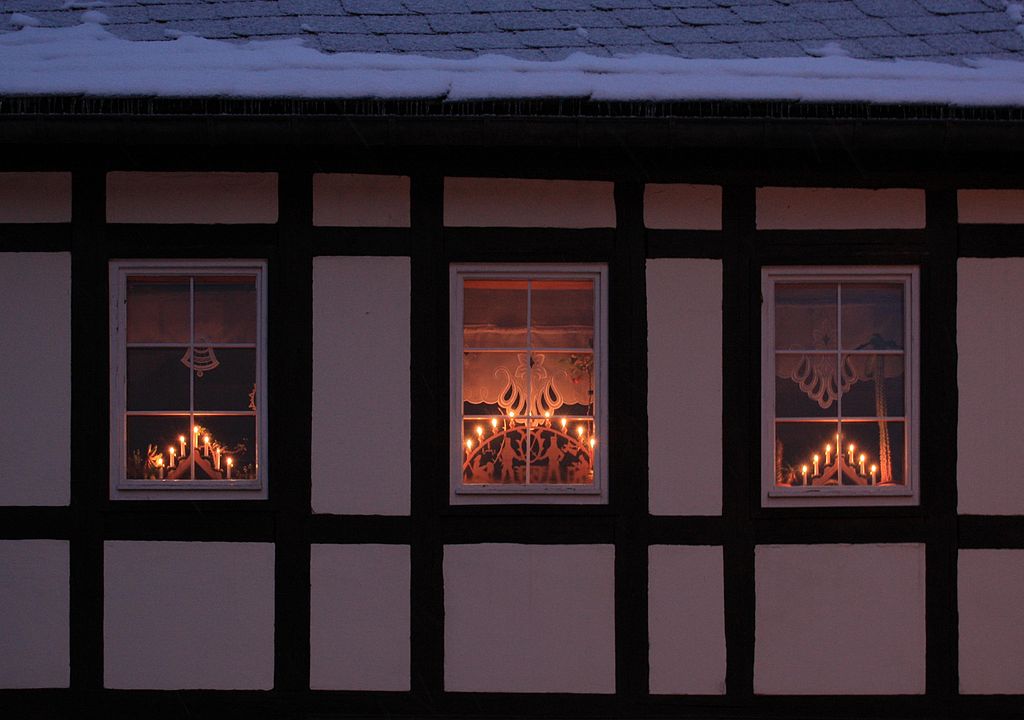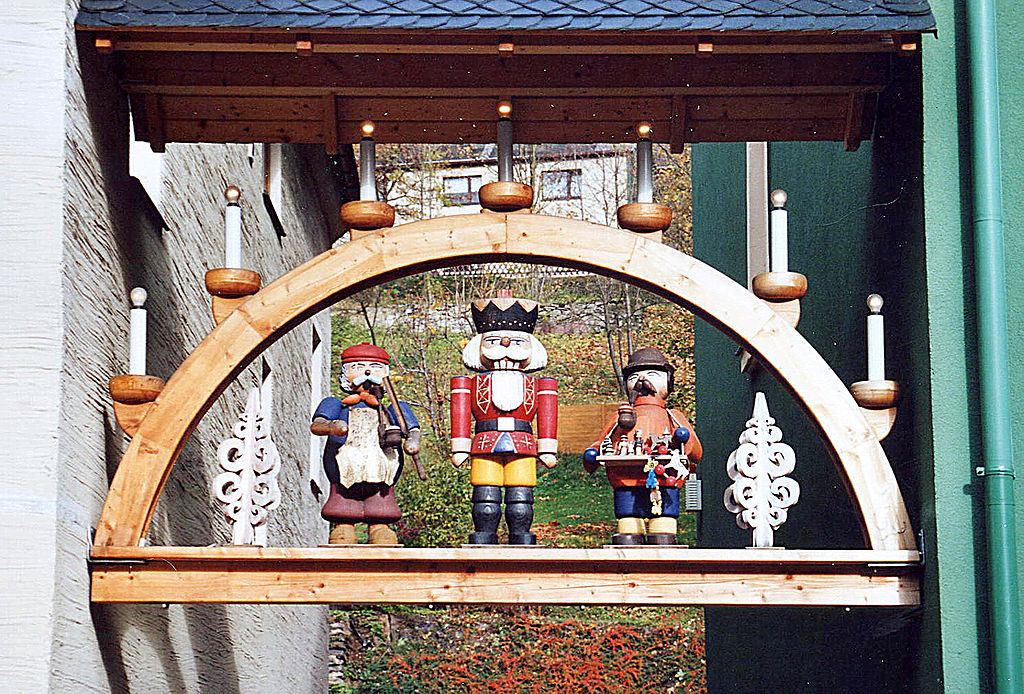German Christmas Decor: Der Schwibbogen Posted by Constanze on Dec 23, 2020 in Culture, Traditions
Guten Tag and Frohe Weihnachten (Merry Christmas)! Today we’re continuing with our festive theme and some of Germany’s December/Christmas traditions. Today’s post is all about the Schwibbogen.
Der Schwibbogen
A Schwibbogen is a decorative German candle arch, often seen in the windows of German homes around Christmas time.
History & meaning of the Schwibbogen
The tradition of the Schwibbogen originated in Germany’s Erzgebirge (Ore Mountains), with the earliest known Schwibbogen dating back to 1740. It is said to have been designed by and for the Bergarbeiter (miners) in that region, specifically for their Mettenschicht (Christmas shift), the last shift of the year. The Schmied (blacksmith) responsible for crafting mining tools likely created it out of metal, to be used as a candle holder. This is why the original Schwibbogen is made of metal, though nowadays they are commonly made of wood and other materials.
The design of the Schwibbogen developed over time, with figures being added that depicted the miners themselves, and symbols of Christmas time, such as angels and trees. The arch of the Schwibbogen is said to depict the entrance to the mines, and the candles to represent the light the miners needed to work underground.
One of the most famous Schwibbogen designs was by Paula Jordan in 1937. Her design included the following:
Der Bergarbeiter (miner)
Der Schreiner (carpenter)
Der Spitzenklöppler (bobbin lace maker)
Der Weihnachtsbaum (Christmas tree)
Der Hammer (hammer)
Das Schwert (sword)
Der Engel (angel)
One variation of the Schwibbogen is die Lichterspitze (‘light peak’), a pyramid-shaped set of candles, often with a festive figurine or nativity scene in the middle.
Today, the design of the Schwibbogen varies greatly, with some more traditional than others. In addition, some use real candles, whilst others are battery-operated. Many German Christmas markets will sell Schwibbogen that are unique to the local town, depicting famous landmarks of the region, for example. You can also buy all manner of Schwibbogen online – there is a design and a style for everybody!
The Schwibbogen were originally placed in the windows of people’s homes in the Ore Mountain region to guide miners back home after their shifts. Today, they remain a nice way to bring light into the darkest time of the year.
I hope you’ve enjoyed this post. If you have, you might like these, too:
Barbarazweig
The Christmas tree in German history
The origin of the snow globe
Festive German drinks
As always, please leave any comments in the comment box below. Frohe Weihnachten!
Constanze

Build vocabulary, practice pronunciation, and more with Transparent Language Online. Available anytime, anywhere, on any device.







Comments:
Judith Haran:
Am I the only person who sees a remarkable resemblance to Hanukkah candles here?